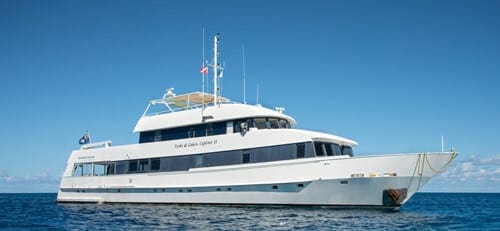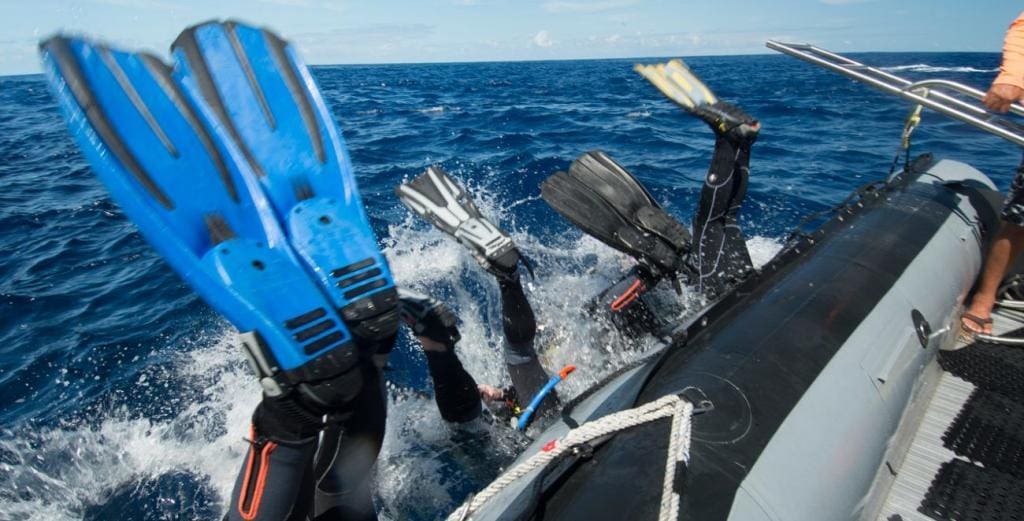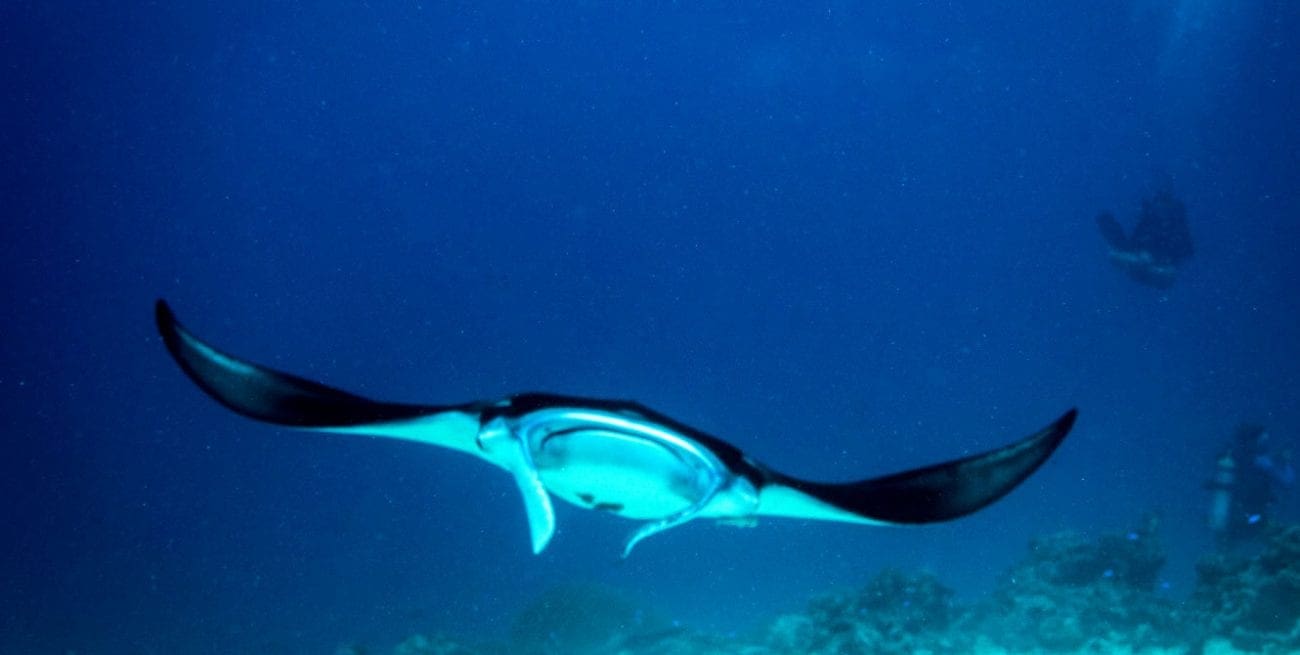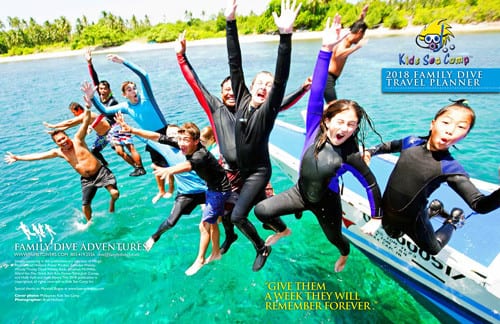Diving with kids on Liveaboards
Liveaboard travel is an excellent way for any diver to see the best dive sites a destination has to offer. It allows divers easy access to long-range dive sites and more secluded or remote areas that cannot be reached by day boat. Some might say Liveaboards are for the dive-hards in our industry, those with the “eat/sleep/dive” mentality. For avid adult divers, it’s undoubtedly been the way to go. I myself have enjoyed those five-dive-a-day, dive-hard experiences on liveaboards around the world for 30 years. There have been rough crossings, big currents, stormy days, and plenty of advanced open-water dives with big animals. That may seem the norm and even fun for many dive-hards, but what are the considerations for kids?
Many divers are now parents. They may have been dive-hards in the old days and want to now share with their kids some of the remote, exclusive, and rare experiences. Such as diving forgotten islands and enjoying rare encounters.
When I contemplated taking my own kids to the Silver Bank to Swim with humpback whales, the Galapagos to explore Darwin and Wolf, The Sea of Cortez to dance with sea lions or to share in rare and majestic dive adventures around Indonesia, Maldives, and Palau, I thought about logistics such as having a child on a boat so far from the nearest hospital or doctor; I considered what it would be like to have a child be seasick for days; I envisioned how small a 125 foot (33M) vessel with 18 passengers could feel after 3 days with no land in sight. Most
Personally, I feel taking kids on a liveaboard as a certified diver can be one of the most rewarding and fun experiences of your child’s life. I have been taking kids on liveaboards for 20 years. There are a few ways to go about this in order to ensure success;
1. Safety first: check the credentials of the fleet and boat your booking with. Check to confirm they are up to date with all safety requirements and mandates. Ask if they allow kids and what their experience level is with kids. Make sure your kids will have their own DM and get acquainted with the layout and safety equipment aboard. Ask for an emergency contingency plan. Make sure the organization you’re booking with is an experienced, kid-friendly dive organization. Kids need attentive guides that turn around often and stay no more than a breath away.
2. Book your liveaboard trip into a family week where other kids and recreational diving families with similar profiles are on board. This will ensure the entire itinerary of the liveaboard is geared to a safer more conservative profile and dive site choices. Less current, better viz, calmer dive sites can be chosen. Insist on your itinerary being dedicated to ease of diving for all levels..
3. Charter the full yacht. There are then no dive hard guests to cater to who prefer not to have kids on their trip. No worries about noise, menu items, or issues with dive site choices. It’s all about kids and you. I book full boat charters for KSC, and I book them for 3 or 4 families that love to travel together. I don’t recommend more than 20 divers on a liveaboard yacht and prefer 100 ft or more with 8-10 cabins and private bathrooms.
The key to taking my kids on liveaboards happily is having other kids on board. They bond, they laugh, they have sleepovers in each other’s rooms, and they camp out on the top deck in the hammocks and chairs under the stars. They enjoy sharing photos and making slide shows, and depending on the captain and location, they like helping cook and jumping off the sides of the boat when anchored.

DESTINATIONS: Choosing which liveaboard vessel for a trip with our kids is very important. Start easy with a Caribbean liveaboard in a calm, clear destination. My favorites are with the Explorer Venture Fleet. I also feel the Cayman Islands is another easy learning spot. They make great testers because they are close to land, easy to access with daily flights, and have a variety of pins set at the better dive sites around those islands. I have also taken younger divers who have a bit more land experience to both the Sea of Cortez and Socorro with the Rocio Del Mar. Both very family-friendly operators.
The Galapagos is known for its advanced diving, and most liveaboards won’t take kids on regular trips because they have other advanced adult guests to cater to, and kids won’t fit into that equation. So a full boat charter is an answer here. I add up to two experienced guides in the water on each of the pangas as well as confirm that kids have a minimum of 10 dives and are Jr, Advanced open water-rated or higher. Its important that they are excited and wanting to go on the liveaboard.

If your child has good buoyancy and can follow directions well, then as long as a liveaboard is something they want to do, it can be a great experience for the entire family. With a Kids Sea Camp family liveaboard trip, parents can go and do some of the more experienced diving while kids are looked after by trained kid-friendly PADI dive pros who will dive with them with their age-appropriate profiles at shallower depths. I also provide strict ratios for kids in the water with instructors. 1:4 with kids 14 or under and 1:5 with age 15+. If there is special conditions or request then I will provide a 1;1 when needed.
If you are considering an individual trip, your kids should be age 12+ and Jr. Advanced certified. With that PADI rating, the max depth is 70ft. Again, I always say be more conservative and only dive to your comfort and experience level within your recommended profile. Never allow kids to dive with other kids, and always request a dive pro to dive with you and your kids if you are not one yourself.
Comfortable, stress-free diving on liveaboards: I am 54 years old this year. I have over 6,000 dives, and like many parents and even grandparents my age, I like luxury diving. I want a big soft bed and great food, and I don’t want to worry about changing tanks or lugging gear. So I am predisposed to take families who travel with me on more Luxury liveaboards because I find them more relaxe,d and they take care of everything. Valet diving, gear rinse, dry and bagged for you. I don’t see my luggage from the moment I get off the plane until it arrives in my cabin.
The Pelagian with Wakatobi and the Arenui, to name a few of my favorites, will do just that. Some liveaboards I work with include Citizen Science programs on board for the kids that include plankton collection, shark ragging, plastic studies, and documenting whales. I can organize this type of trip with any of my group trips and on individual trips with Rocio Del Mar.

The bottom line, ask good questions, get great answers or keep looking.
- How many guests are on board?
- How many cabins?
- How many guides are in the water diving?
- How many shore excursions?
- How long are the crossings?
- How many beds per cabin?
- Is there a night watch?
- What is the emergency protocol?
- Do you have kids’ dive gear?
- Do you have kid-friendly experienced dive instructors on board?
- Can I dive at shallower depths with my kids?
- What is the age limitation for your liveaboards?
- What forms of communication are available onboard?
- Are there smoke detectors in all rooms?
- Is there a layout and ship specs available to view?
- Are their menu variations for kids, GF, or vegetarians available?
- Is it possible to have my own private guide?
- What level of certification is this itinerary suited for?
- Are their smaller scuba tanks available?
- Are dives conducted from a panga or main boat?
By Margo Peyton, See full version in Diver Magazine


